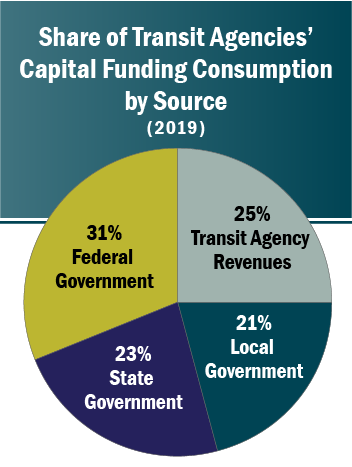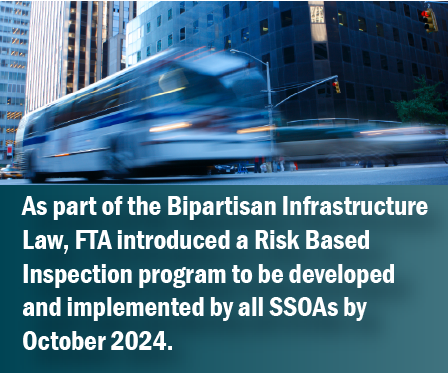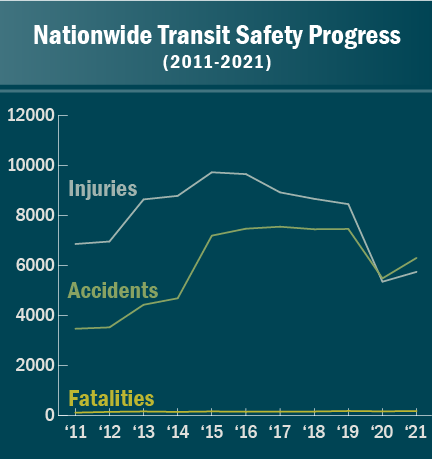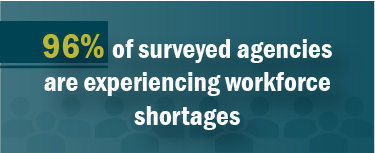State and Federal Oversight Agencies Collaborate for Transit System Safety
The United States is gearing up for the country’s largest ever federal investment in public transit. Funds from the 2021 Infrastructure Investment and Jobs Act (IIJA) will enable an unprecedented pipeline of new capital projects.
Over the lifespan of these projects, sponsors must overcome challenges ranging from the availability of technical resources and labor shortages to on-going supply chain issues — all while shouldering their responsibility to deliver a safe, reliable transit system.
To achieve safety and security goals on increasingly large and complex projects, oversight becomes ever-more important. Close collaboration among state and federal agencies can prevent burdensome redundancy, avoid delays, and enhance overall project quality.
Public Transit Oversight Roles and Responsibilities
The role of federal and state government agencies goes far beyond serving as capital funding partners.

Source: CBO
The Federal Transit Administration (FTA) runs the Project Management Oversight Program. Its mission is to protect federal investments in transit infrastructure through effective, risk-based oversight of major capital projects.
Transit agencies are responsible for certifying the operational readiness of new and extended infrastructure prior to placing a system into revenue service.
Implementation of the system’s safety and security management program is overseen by an entity designated by the relevant state (or multiple states), known as the State Safety Oversight Agency (SSOA). FTA provides federal funds through the State Safety Oversight (SSO) Formula Grant Program for states to develop and carry out their SSO programs.
Some SSOAs provide reviews of a project’s safety certification, while others are required to provide concurrence of the safety certification prior to placing a system into revenue service.
Firms with specialized expertise, known as Project Management Oversight Contractors (PMOCs), are employed by FTA to evaluate the project sponsor’s management and technical capacity, and to review successful project implementation in accordance with a project sponsor’s plans and specifications. The PMOC’s project oversight includes monitoring the transit agency’s project safety and security program.
The SSOAs and FTA PMOC provide necessary technical reviews, program guidance, and oversight. The PMOC works with transit agencies throughout the project — starting from the engineering stage all the way through revenue service readiness. SSOAs continue oversight once the system is operational, with roles and involvement varying by state.
Best Practices in Safety and Security Oversight
In 2016, Congress established a new Public Transportation Safety Program following several high-visibility safety incidents. The program led to a National Public Transportation Safety Plan, developed by the FTA, that outlines requirements for FTA transit partners. Requirements include:
- Track safety performance measures for transportation systems receiving federal financial assistance
- Establish minimum safety standards
- Create a safety certification training program
For some, fulfilling federal compliance and oversight requirements may feel burdensome. Safety certifications demand dedicated time and resources. A document-driven process, oversight involves rigorous validation, verification, and traceability measures. As a result, it is common for safety reviews, certification, and audits to lag project completion.
But, more often than not, an effective oversight process delivers financial, operational, and safety benefits. Best practices for an effective oversight process involve three key elements:
- Beginning the safety review process early, and providing continual feedback, can avoid costly delays
- Sets clear expectations for how reviews will be conducted throughout project development
- Provides opportunities to perform spot reviews of safety activities that can lead to timely corrective actions
- Simultaneous, closely coordinated PMOC and SSOA reviews provide the sponsor with a uniform set of recommendations and corrective actions
- Avoids separate, redundant requests that can deplete sponsor resources
- Eliminates potential contradictions and confusion
- Pools together collective experience and knowledge across PMOC and SSOA teams
- FTA’s Lessons Learned Program is intended to increase effectiveness of transit capital expenditures through shared experience and lessons learned on major capital transit projects. FTA’s database builds upon a collaborative effort between the FTA, PMOC, and transit agencies
- Pro-actively addresses potential project risks, sharing detailed safety oversight knowledge to support grantee decision making
- Sets a foundation for process improvements and staff training that builds upon national project development and revenue operation best practices
- Contributes to continuous improvement in safety processes and reviews
Oversight Teams Counteract Agency Knowledge Drains, Lower Overall Project Risks
IIJA implementation is taking place at a time when public transportation industry retirements are occurring at more than double the national average. Shortages of safety and security management expertise among state and local governments will prove particularly challenging for successful system certifications.
PMOCs help counterbalance knowledge drains by supporting and providing guidance to state and transit agencies’ internal teams. Sharing expertise from programs across the country, PMOCs advise project sponsors on approaches that can lead to successful Safety and Security Certification Plan implementation.
Collaboration will prove increasingly important as SSOAs implement new federal safety rules. Prompted by IIJA requirements, FTA directed SSOAs in October 2022 to expand their role in safety oversight. All SSOAs must now develop Risk-Based Inspection Programs, applying qualitative and quantitative data analyses to identify safety concerns and hazards associated with the highest level of risk.
 Time and again, transit agencies who foster proactive collaboration between the SSOA and PMOC have achieved more timely certifications. Sharing the PMOC’s expertise can lower risks that correct actions are raised only during the final phase of development — after system infrastructure has already been constructed.
Time and again, transit agencies who foster proactive collaboration between the SSOA and PMOC have achieved more timely certifications. Sharing the PMOC’s expertise can lower risks that correct actions are raised only during the final phase of development — after system infrastructure has already been constructed.
As SSOA inspectors begin to use new data-driven approaches to improve transit system safety, expertise from the PMOC will remain essential. Close collaboration is the best approach to uphold the highest safety standards and deliver projects that earn the trust of the traveling public.




